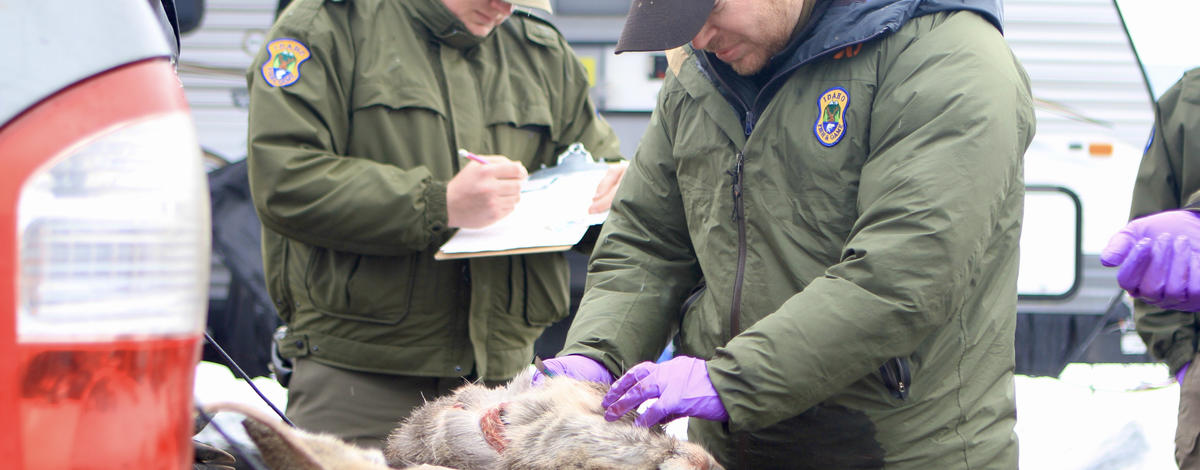Deer hunters will see changed rules for chronic wasting disease management during the fall hunting season. There are additional mandatory testing requirements for several hunting units in central Idaho along the U.S. 95/Highway 55 corridors south of Grangeville in response to the latest CWD data.
At the March Fish and Game Commission meeting, commissioners changed the following:
- Unit 18 was added to the CWD Management Zone, resulting in the CWD Management Zone being Units 14 and 18. Unit 15 was removed from the Management Zone because no positive animals have been found there, even after extensive testing. People hunting in CWD management zone must abide by special hunting rules, which can be seen on the CWD webpage.
- CWD testing is now mandatory for mule deer and white-tailed deer harvested in Units 23, 24, and 32A, but mandatory testing will not apply to elk and moose taken in those units. Although there is mandatory testing of harvested deer, those units are not within a CWD Management Zone so the special carcass transportation rules of the Management Zone do not apply.
- There is no longer mandatory CWD testing required for mule deer, white-tailed deer, elk, and moose harvested in Unit 15 and for elk and moose harvested in Unit 14. Elk and moose are less susceptible to CWD than deer, so current efforts to monitor CWD spread and the portion of animals infected are focused on deer. However, Fish and Game will still accept voluntary samples from hunter-harvested deer, elk, and moose from any unit.
Why the changes
Effective management of CWD spread will require managers and hunters to be dynamic to changing conditions and new information. Along with that, IDFG is striving to only implement additional asks of hunters they believe are necessary for that management and monitoring and remove asks they determine are no longer necessary, like mandatory testing in Unit 15.
The expanded CWD testing requirements are in light of CWD being detected in mule deer in Units 18 and 23. Those deer are migratory, so managers want to increase testing in adjacent units to see if it is present in other units.
To date, two cow elk and no moose have tested positive for CWD. Elk and moose are less susceptible to CWD than deer. Although they can still contract it, managers are less concerned about CWD affecting those animals.
Doing nothing isn't an option for Idaho
CWD is more manageable and spreads slower when only a small fraction (less than 2 percent) of the herd is infected. When it exceeds 5 percent, the disease spreads faster, leading to even more animals getting infected and eventually to a decrease in the number of animals overall. Active management to keep the number of infected animals low results in slower spread to other areas of the state and fewer sick animals available for hunters.
Idaho Fish and Game is managing to minimize CWD spread by reducing deer density in the current hot spot of infection—the area around Slate Creek in Units 14 and 18—and extensively testing in adjacent units to gauge how much it’s spreading. This can’t be done without assistance from hunters. Having your harvested deer tested provides critical information about what’s happening with the disease.
The changes were in response to several factors, not just the Unit 23 positive


